cuprum / positive-negative
a process where the resulting objects are related through the material transformation.
year 2014
category Processes / Machines & Their unique Results
commissioned by
Kunstgewerbemuseum Schloss Pillnitz

Five design studios from Europe were invited to develop a project for the Kunstgewerbemuseum, based on pieces from their collection found in the archives.- we were one of these design studios.
After a tour through the museum’s storage, we had a certain fascination for some old velvet presentation-boards that were once used to show fabric samples. Used for many years (some of them nearly 100 years), these boards show the exact shadows of the fabric pieces or laces which in the past were presented on them.
Through time the velvet boards became nearly a copy of the original in an abstract way. This dependency and connection of two ements, the play between positive and negative, was translated into the project Cuprum. Two metal pieces – copper and a metal mesh – are immersed together in a copper sulphate solution.They need each other for the transformation of the material. Partly covered with foil to control the flow of material, a low electric current is applied to both metals and due to electrodeposition, the copper gives away its material and copper-plates the steel. The rate at which the copper dissolves is equal to the rate at which the steel or the steel-mesh is plated, thus illustrating how the one material is supporting the other. They need each other for the transformation of the material.
Left in the sulphate bath for some time both materials are enriched in patterns, formability or, in the case of the mesh, stability. Whilst the copper can be decorated with patterns or receives constructed folding lines, the stainless steel-mesh slowly grows together, becomes solid, well connected and even paper clips become permanently attached.
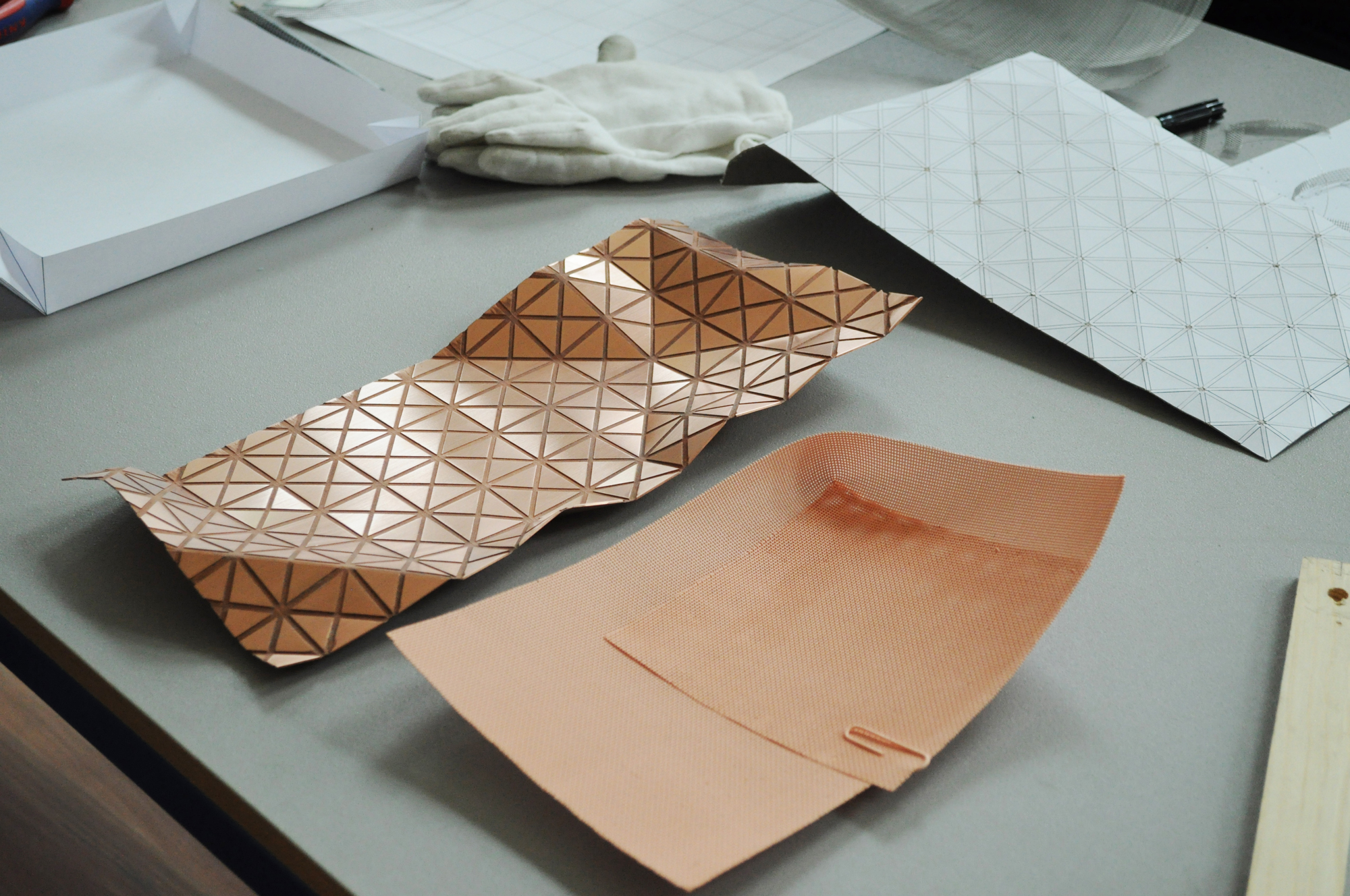
finished pair
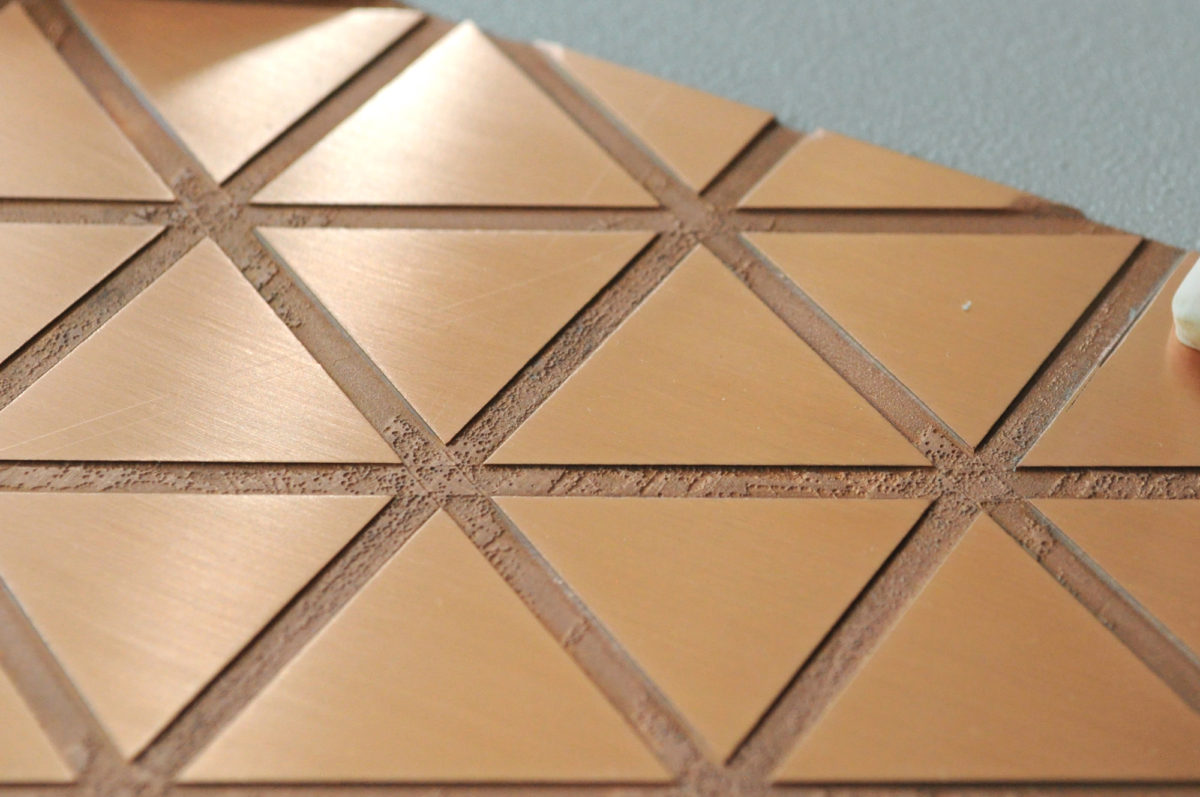
detail of planned dissolved copper resulting in pattern and folding lines
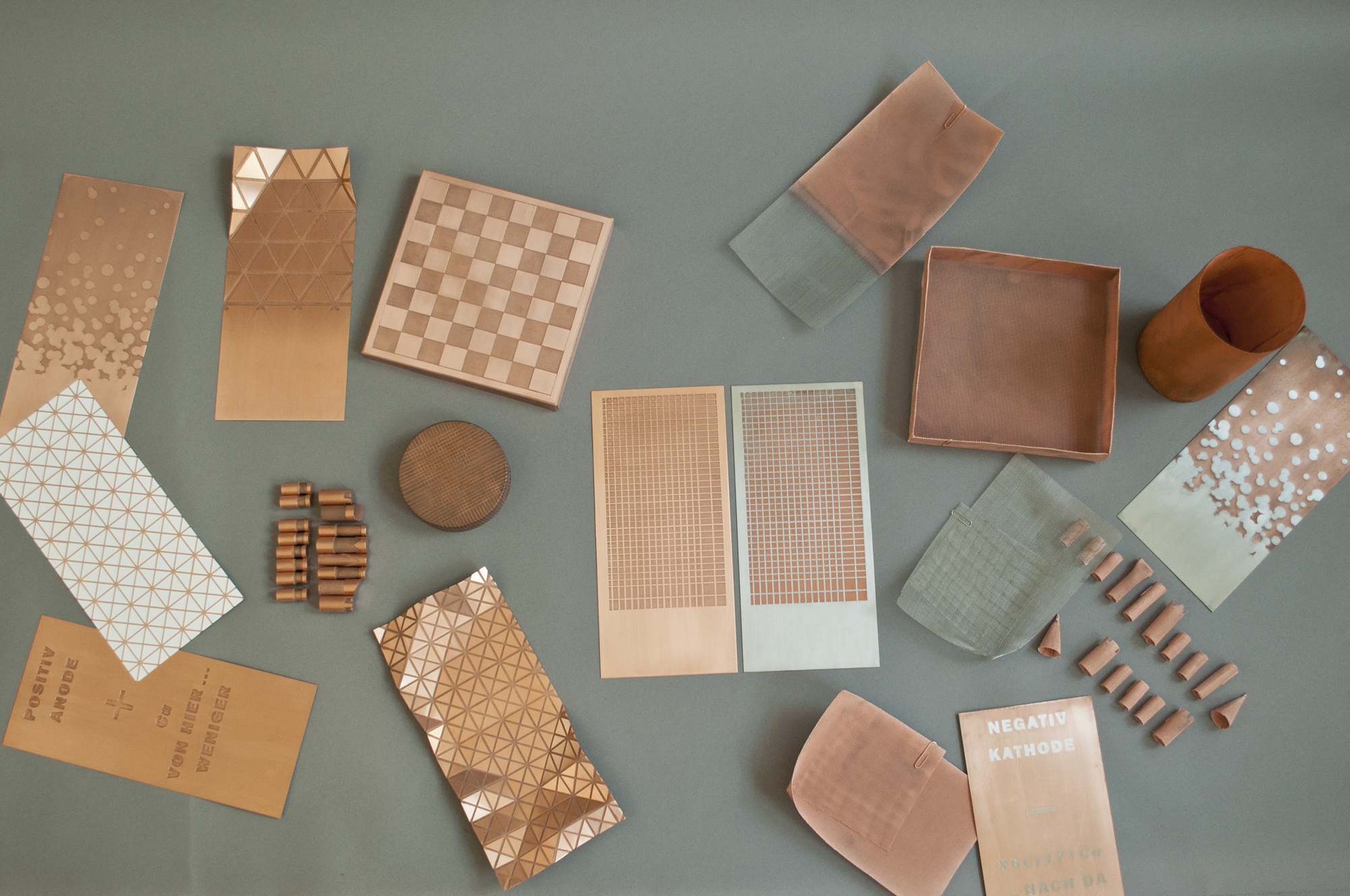
several objects for the positive/negative exhibition (left) copper pieces (right) copper plated stainless steel

detail zoom onto a copper sheet in the electroplating tank
Through the slow process of electroplating, a copper-element and a piece of stainless steel physically transform, become related to each other and form new
patterns and shapes.
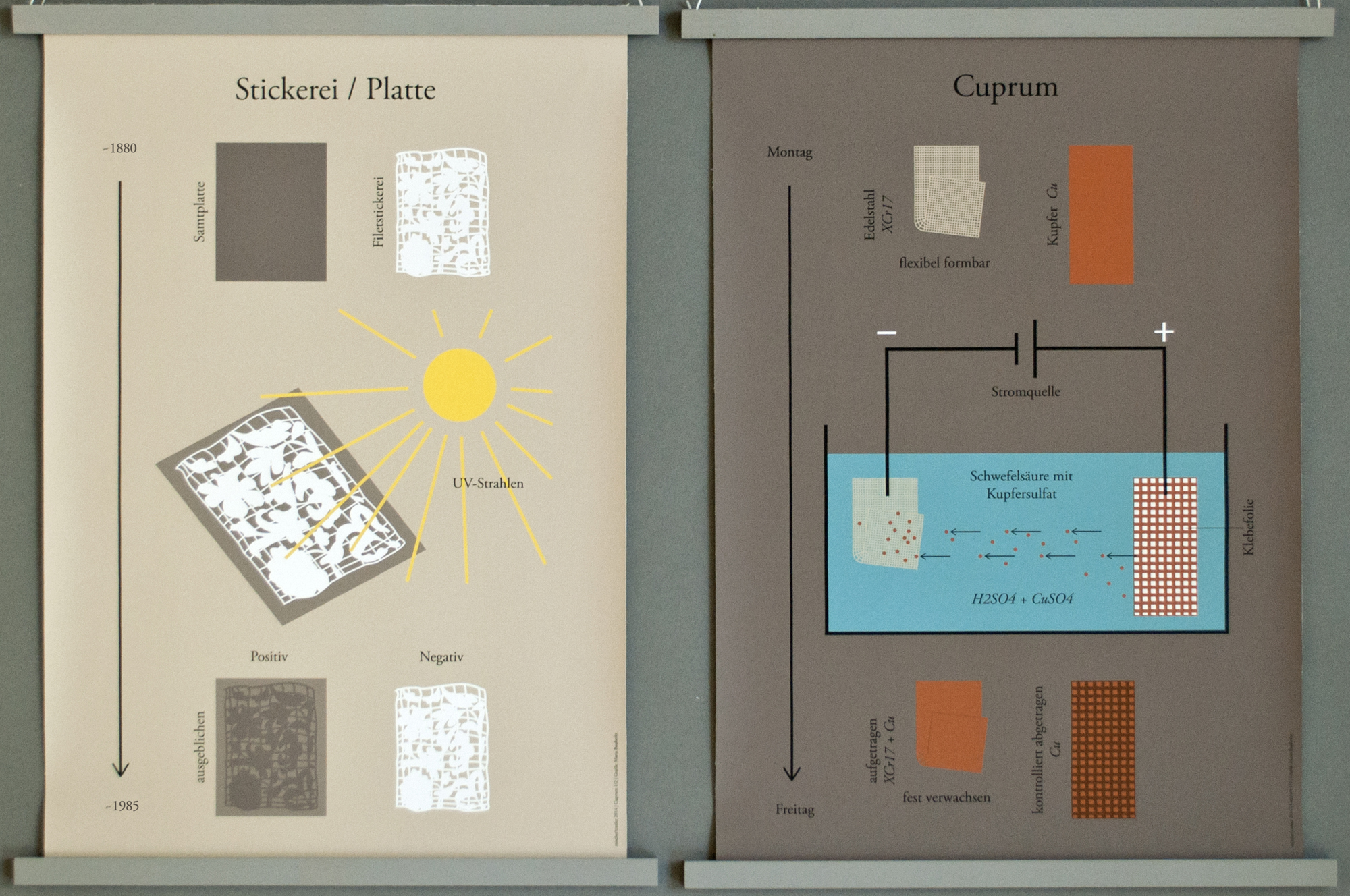
descriptive boards of the processes – left: natural sunlight and its effect on the museum pieces, the inspiration for the project | right: electroplating for the cuprum project

set-up of the whole curprum installation at the museum
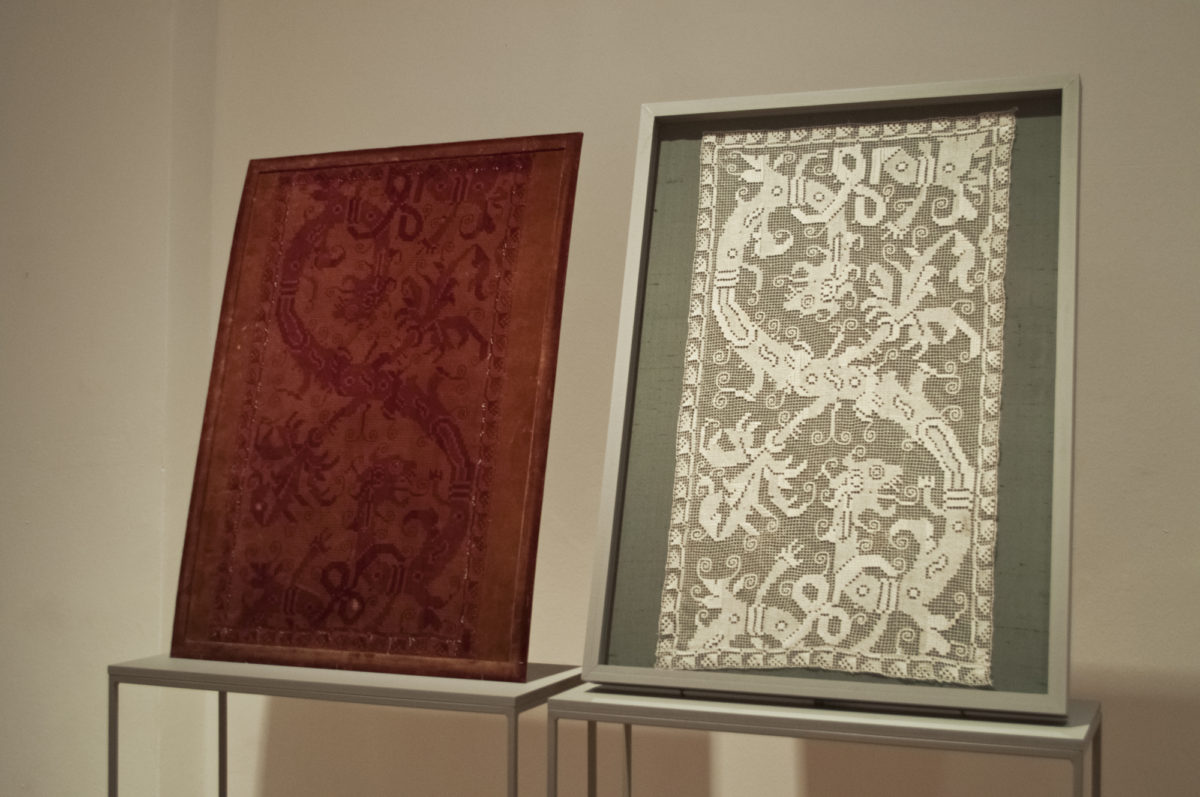
inspiration for the project
right side: an original piece of embroidery (17th century)
left side: the velvet board used in former times for presentation
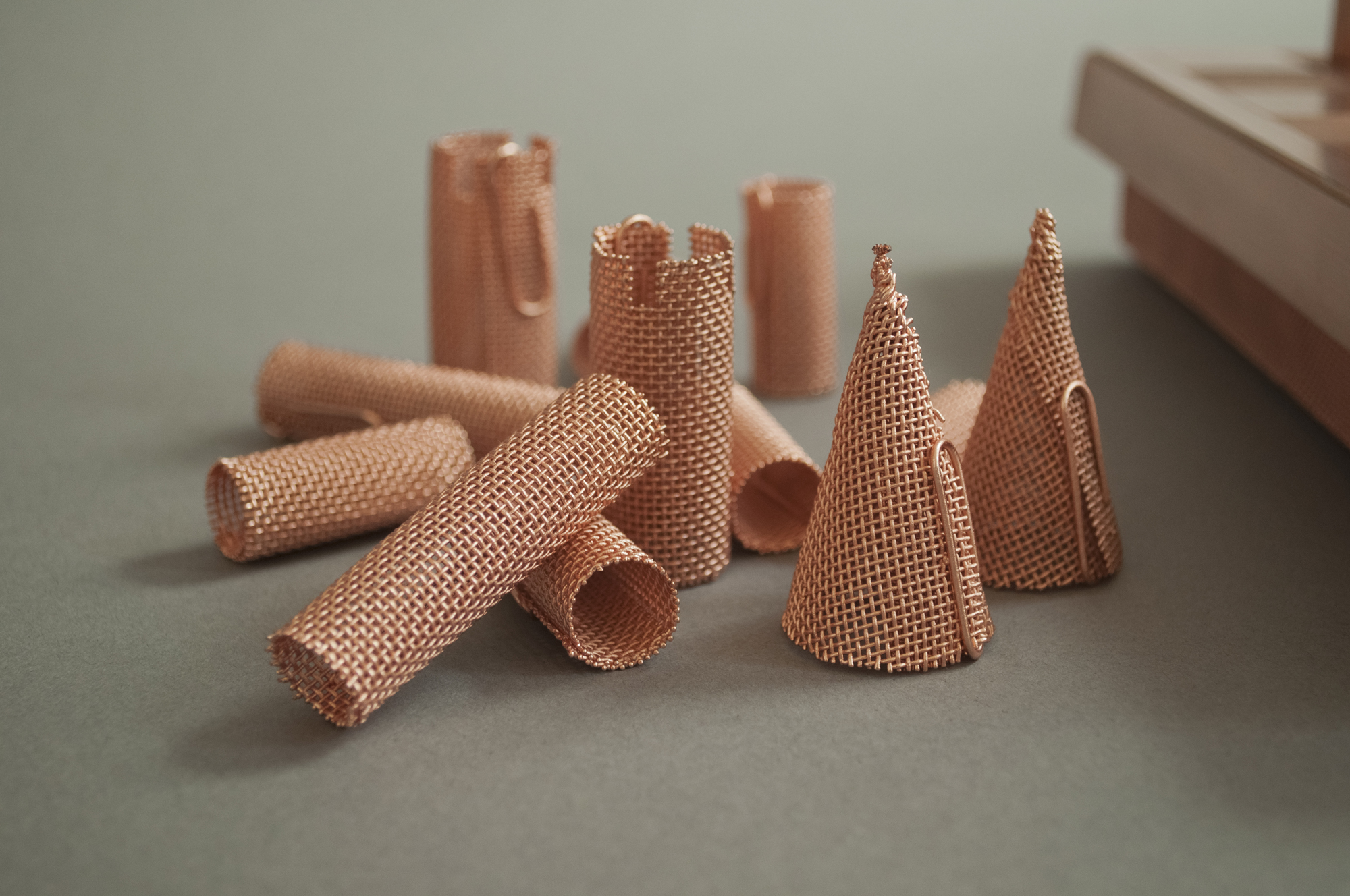
details of some chess figures made out of copper plated steel-mesh

example of graphical material exchange
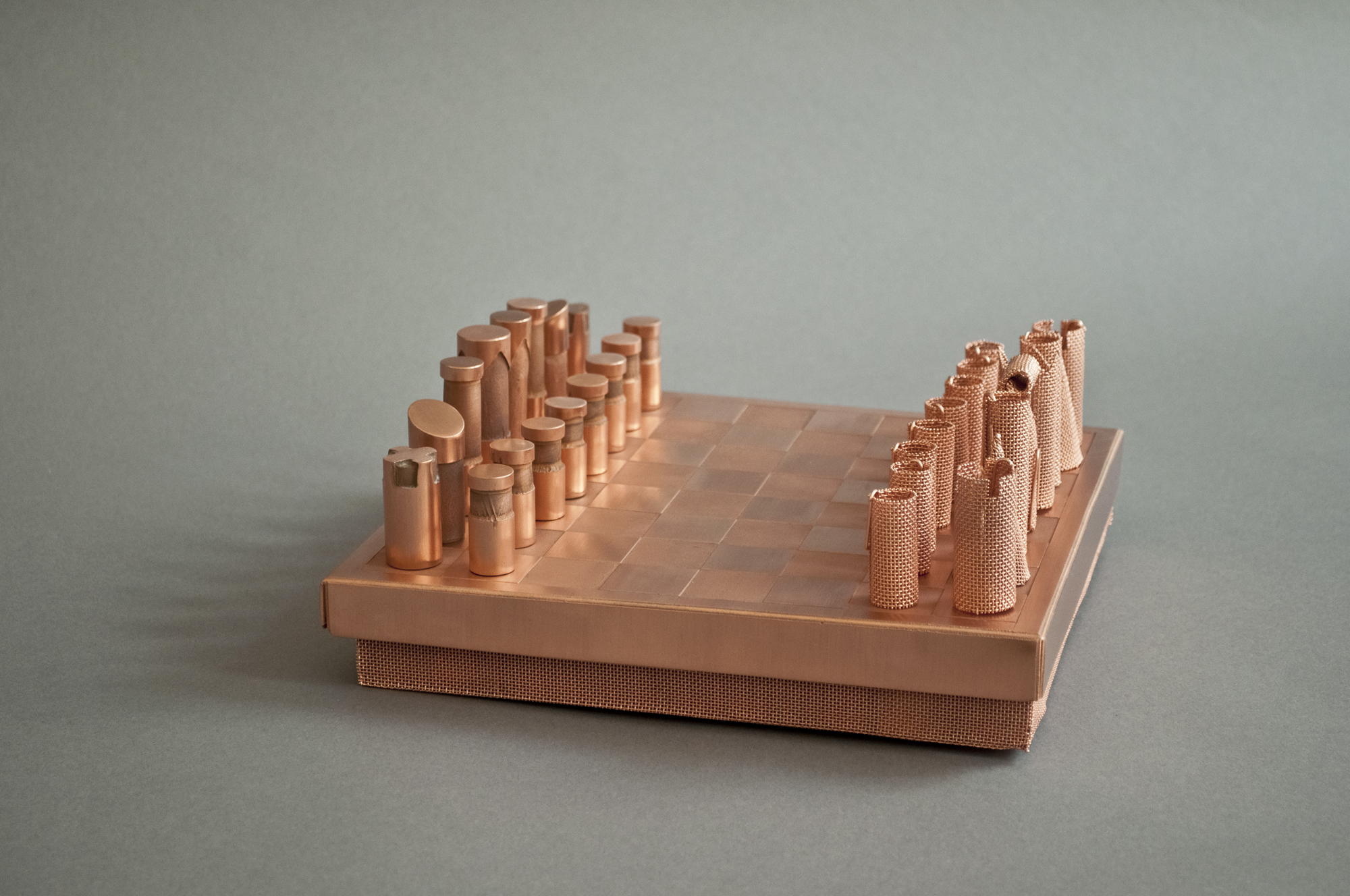
finished chess set
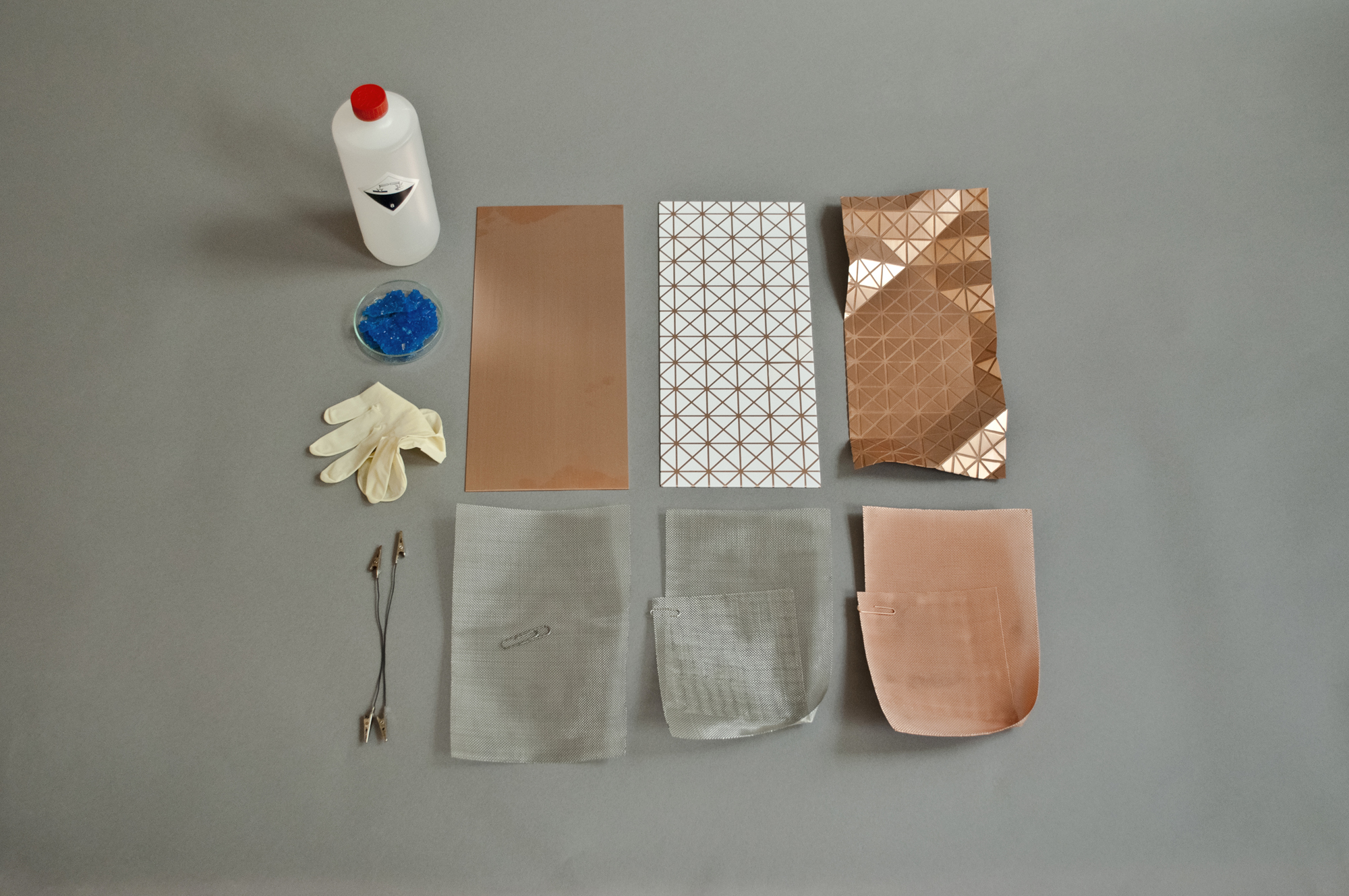
overview of the relevant process' steps
-
material
copper, copper sheets, stainless steel, paper-clips
-
dimension
various
-
collection
-
team
Katharina Mischer, Thomas Traxler, Maria Bauhofer